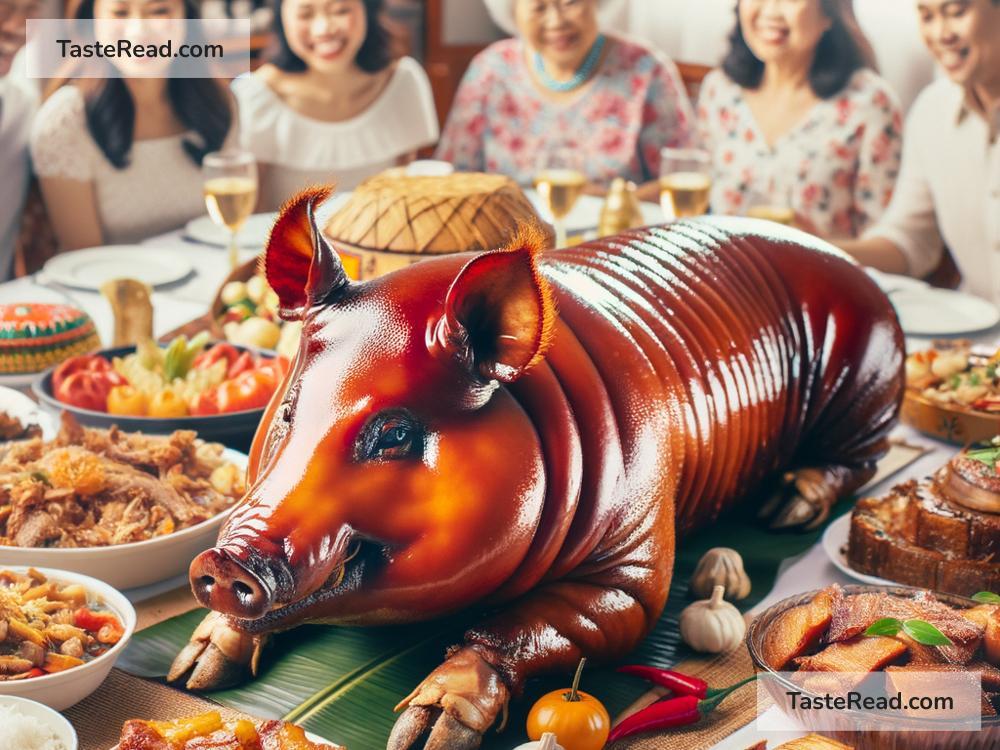How the Filipino Lechon Became a Special Occasion Dish
In many Filipino gatherings, one dish stands as the unrivaled star of the feast: the lechon. This delectable, spit-roasted pig is not just a meal; it’s a celebration on a plate. But how did this savory, crispy delicacy become the centerpiece of Philippine festivities? Let’s dive into the intriguing journey of the Filipino lechon from humble beginnings to becoming the life of the party.
The Root of the Tradition
The tradition of roasting pigs dates back centuries across various cultures around the globe, but the Filipino lechon has carved its unique identity, deeply embedded in the country’s culinary history and cultural festivities. The word “lechon” itself is derived from the Spanish term “leche,” meaning milk, possibly pointing to the original practice of roasting suckling pigs (pigs still feeding on milk).
When the Spaniards arrived in the Philippines in the 16th century, they brought with them their culinary traditions, including the practice of roasting pigs. However, the Filipinos embraced this tradition and made it their own, using local spices and ingredients to marinate the pig, resulting in a distinctive taste that’s uniquely Filipino.
The Art of Lechon Making
Making lechon is no simple task; it’s an art that requires skill, patience, and a lot of hands-on attention. The process begins with preparing the pig, which is traditionally stuffed with a mix of herbs and spices like lemongrass, onions, garlic, and bay leaves. This stuffing imparts a fragrant aroma and flavor to the meat as it cooks.
The pig is then skewered on a long bamboo or metal pole and roasted over an open charcoal pit for several hours. The cook, often referred to as the “lechonero,” constantly turns the pig to ensure it cooks evenly, achieving that signature golden, crispy skin that’s highly coveted at any feast.
More Than Just a Dish, It’s a Celebration
The preparation and cooking of lechon are almost as festive as the occasions it commemorates. It’s common for family and friends to gather around the roasting pig, sharing stories and participating in the cooking process. This communal aspect turns lechon making into a social event, strengthening bonds among those involved.
In the Philippines, lechon is the ultimate celebratory dish. It’s a staple at significant events like Fiestas, Christmas, New Year’s Eve, weddings, birthdays, and even during local festivals known as “fiestas” that honor patron saints of different towns and barangays. Serving lechon in these gatherings symbolizes not just abundance and prosperity but also a deep sense of community and shared joy.
Variations Across the Archipelago
As you travel across the Philippine archipelago, you’ll discover that different regions have their spin on the classic lechon recipe. In Cebu, known as the lechon capital of the Philippines, the pig is stuffed with a special blend of herbs and spices, giving it a distinctive taste that many argue doesn’t even need sauce to be enjoyed. Meanwhile, in Manila, the lechon often comes with a thick liver-based sauce for dipping.
In other regions, you might find lechon variants like “lechon kawali,” deep-fried pork belly, or “lechon paksiw,” a dish made from leftover lechon meat cooked in vinegar and spices.
The Meaning Behind the Meal
Beyond the flavors and festivities, lechon carries deeper meanings within the Filipino culture. It represents a sense of community, the importance of family, and the joy of sharing. Preparing and sharing a lechon is a gesture of generosity and togetherness, embodying the Filipino spirit of “bayanihan,” or communal unity.
Moreover, lechon celebrates the Filipino’s mastery in turning simple ingredients into a feast for the senses. It’s a testament to the rich culinary heritage of the Philippines, showcasing the creativity, skill, and traditions passed down through generations.
In Conclusion
From its historical roots to its place at the heart of modern Filipino celebrations, the lechon remains a symbol of joy, community, and the rich tapestry of Philippine culture. It’s not just about the food but what it represents—unity, celebration, and the enduring spirit of the Filipino people. So, the next time you find yourself in front of a glistening, crispy lechon, remember, you’re not just tasting a delicacy; you’re partaking in a centuries-old tradition of celebration and shared joy.


